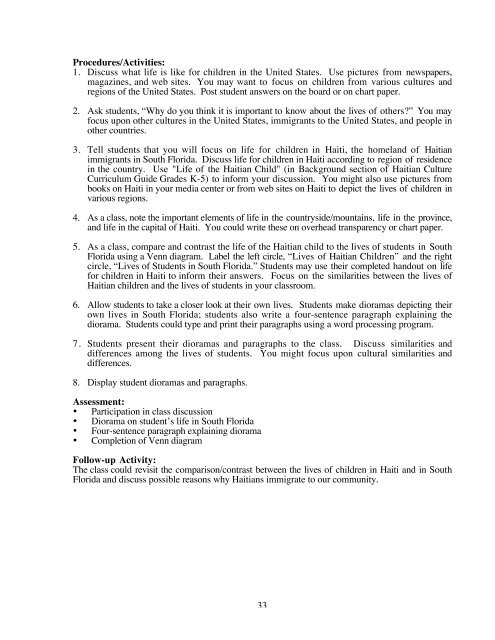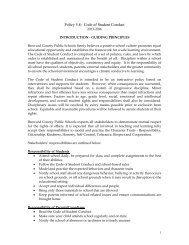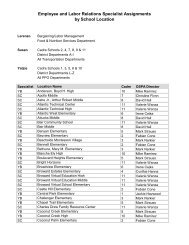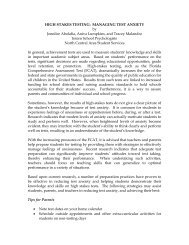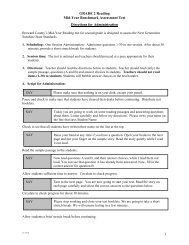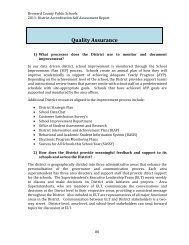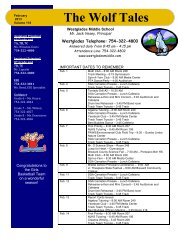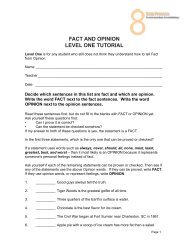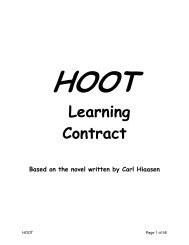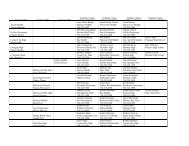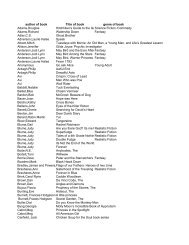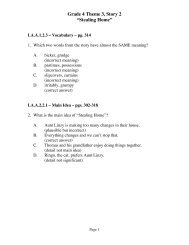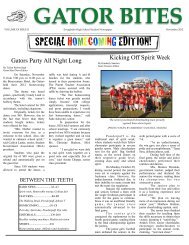Haitian Culture Curriculum Guide
Haitian Culture Curriculum Guide
Haitian Culture Curriculum Guide
Create successful ePaper yourself
Turn your PDF publications into a flip-book with our unique Google optimized e-Paper software.
Procedures/Activities:<br />
1. Discuss what life is like for children in the United States. Use pictures from newspapers,<br />
magazines, and web sites. You may want to focus on children from various cultures and<br />
regions of the United States. Post student answers on the board or on chart paper.<br />
2. Ask students, “Why do you think it is important to know about the lives of others?” You may<br />
focus upon other cultures in the United States, immigrants to the United States, and people in<br />
other countries.<br />
3. Tell students that you will focus on life for children in Haiti, the homeland of <strong>Haitian</strong><br />
immigrants in South Florida. Discuss life for children in Haiti according to region of residence<br />
in the country. Use "Life of the <strong>Haitian</strong> Child" (in Background section of <strong>Haitian</strong> <strong>Culture</strong><br />
<strong>Curriculum</strong> <strong>Guide</strong> Grades K-5) to inform your discussion. You might also use pictures from<br />
books on Haiti in your media center or from web sites on Haiti to depict the lives of children in<br />
various regions.<br />
4. As a class, note the important elements of life in the countryside/mountains, life in the province,<br />
and life in the capital of Haiti. You could write these on overhead transparency or chart paper.<br />
5. As a class, compare and contrast the life of the <strong>Haitian</strong> child to the lives of students in South<br />
Florida using a Venn diagram. Label the left circle, “Lives of <strong>Haitian</strong> Children” and the right<br />
circle, “Lives of Students in South Florida.” Students may use their completed handout on life<br />
for children in Haiti to inform their answers. Focus on the similarities between the lives of<br />
<strong>Haitian</strong> children and the lives of students in your classroom.<br />
6. Allow students to take a closer look at their own lives. Students make dioramas depicting their<br />
own lives in South Florida; students also write a four-sentence paragraph explaining the<br />
diorama. Students could type and print their paragraphs using a word processing program.<br />
7. Students present their dioramas and paragraphs to the class. Discuss similarities and<br />
differences among the lives of students. You might focus upon cultural similarities and<br />
differences.<br />
8. Display student dioramas and paragraphs.<br />
Assessment:<br />
• Participation in class discussion<br />
• Diorama on student’s life in South Florida<br />
• Four-sentence paragraph explaining diorama<br />
• Completion of Venn diagram<br />
Follow-up Activity:<br />
The class could revisit the comparison/contrast between the lives of children in Haiti and in South<br />
Florida and discuss possible reasons why <strong>Haitian</strong>s immigrate to our community.<br />
33


